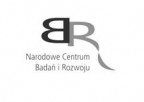Development of the new technologies of implantable devices improving the hearing processes
 Project’s title: Development of the new technologies of implantable devices improving the hearing processes
Project’s title: Development of the new technologies of implantable devices improving the hearing processes
Project’s duration: October 2012 – September 2015
Co-funding institution: The National Centre for Research and Development
The Project is performed by the Consortium:
Institute of Physiology and Pathology of Hearing – the Leader
Warsaw University of Technology, Faculty of Materials Science and Engineering – the Partner
Mennica Metale Szlachetne SA (The Mint – Precious Metals SA) – the Partner
Project’s summary: the goal of the project is to develop an innovative – against these used so far – methods of treatment:
- with the use of fully implantable elements created with modern materials;
- with the use of multimedia systems of hearing organ stimulation
The results of the project can contribute to the increase of accessibility of implantable technologies, for the higher number of patients.
Detailed goals of the project are:
- Preparation of new surgical solutions, which will create the possibility to use different implantable prosthesis supporting the hearing process;
- Development of new implantable elements enabling the improvement of hearing pathway acoustic stimulation, main goal of which is the improvement of speech understanding and therefore inclusion or rehabilitation of people with hearing disorders to regular relations and social activity;
- Preparation of technological, organizational and clinical conditions concerning the manufacture of fully implantable devices.
Solutions developed during the project will constitute the innovative elements of hearing disorders therapy, developed in everyday clinical practice.
Among significant features of the project, with regard to innovativeness, we can list:
- Creation of the possibilities for the development of the fully implantable elements supporting the hearing process;
- Innovative, in clinical regard, methods of performing hearing organ disorders surgical procedures (with the use of different implantable prosthesis);
- Unused so far, composition and structure of the material applied in this kind of implantable elements;
- Means of vibration transfer – via the artificially created linkage of cartilages and bones, in some cases with well-matched alloplastic material;
- Analysis and, if needed, modification of vibration intensification in regard to elements used so far, via the proper selection of material structure and composition, as well as the types of linkage with natural elements of hearing organ.
Scientific and clinical results, planned to be achieved in the project, should bring measurable social, economic and market results. They will be strictly connected with gaining the ability of hearing or improving the hearing in deaf and hearing impaired people to the level that they will be able to communicate freely. It will positively affect the equal education, social and occupational opportunities as the access of these patients to education and training services, as well as to the labour market will be increased. It should significantly lower the present costs of therapy and enable to obtain an adequate social and occupational status of the treated, large group of people.





